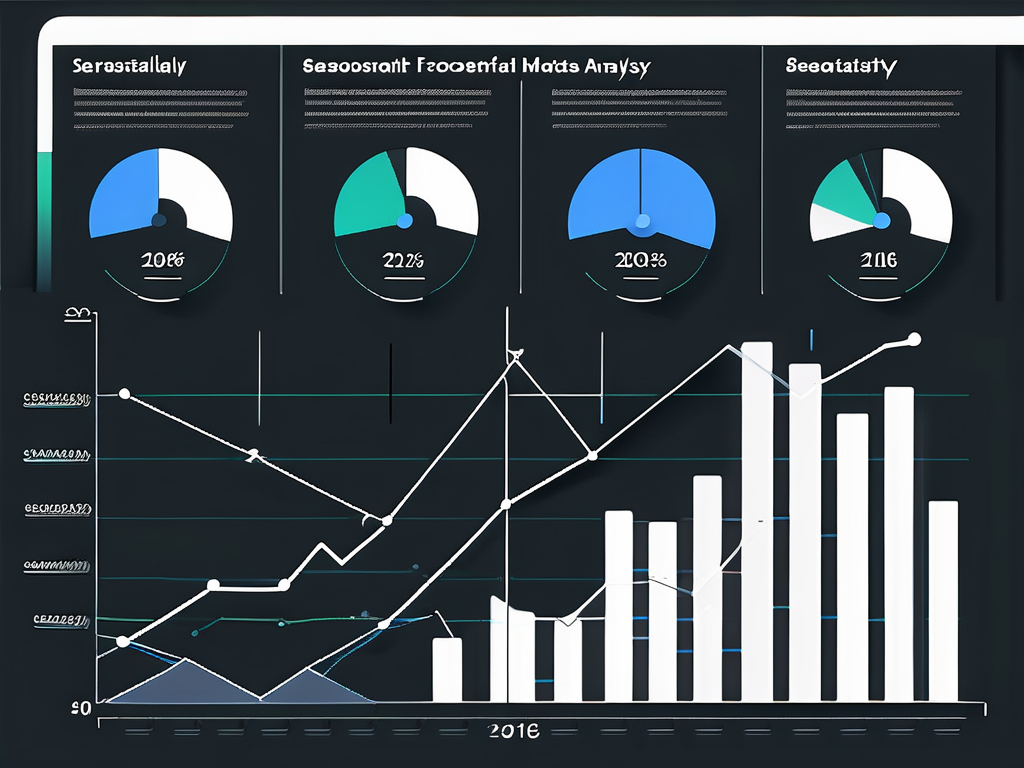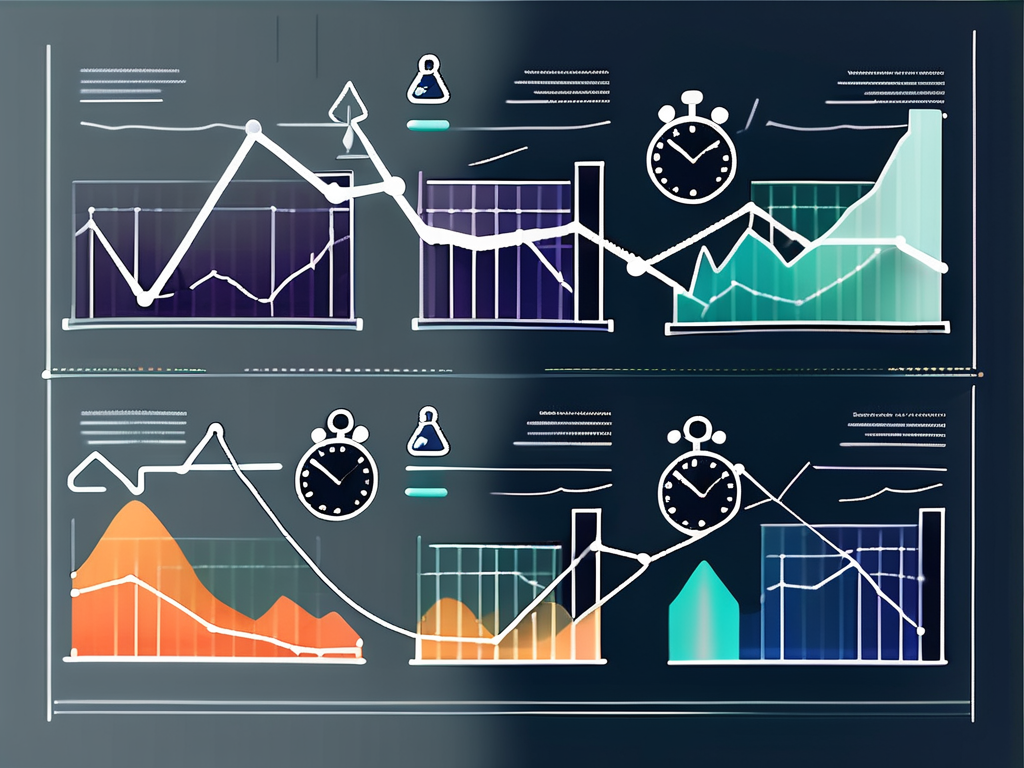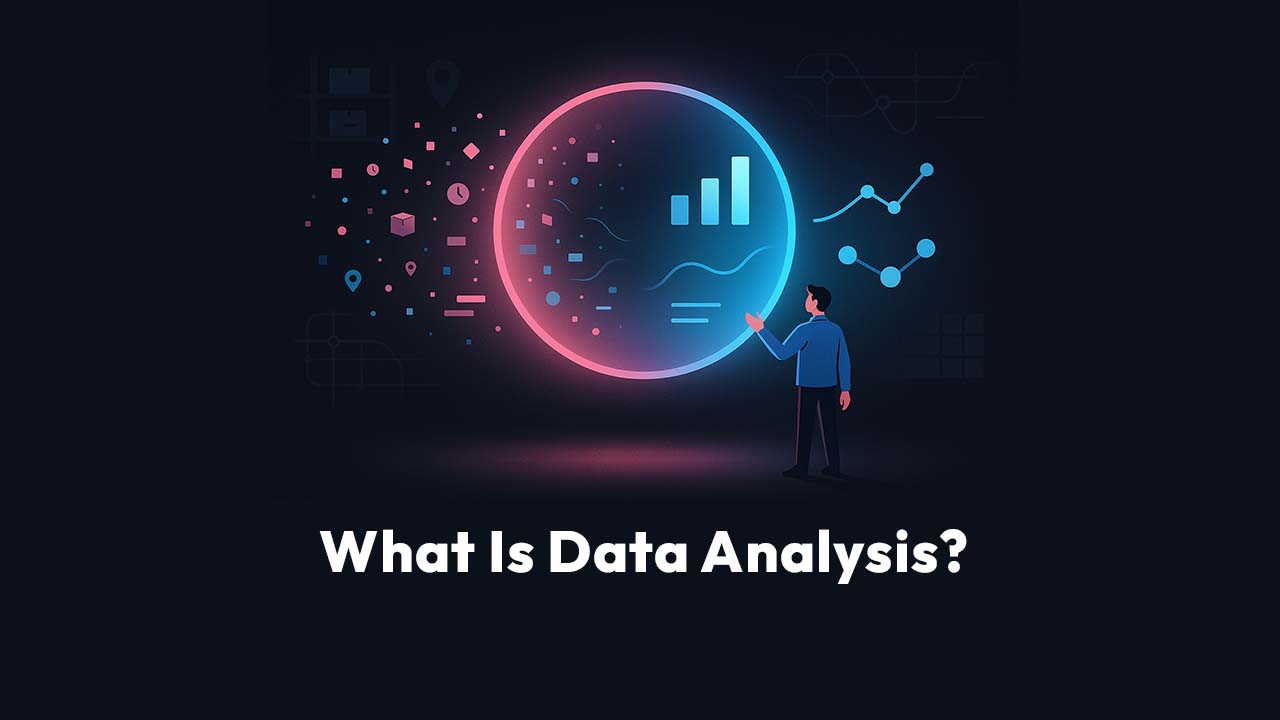A Beginner’s Guide to Understanding Data Trends
Time series analysis is the practice of examining how something changes over time so you can understand what happened, why it happened, and what’s likely to happen next. If you work with any kind of recurring data — revenue, leads, ticket volumes, inventory levels, call times, conversion rates — you’re already sitting on a time series. The question is: are you learning anything from it?
Most people don’t realize this, but your brain is wired to recognize patterns long before you consciously do. Time series analysis simply gives structure to what our intuition is already trying to tell us — and once you learn how it works, you start seeing trends everywhere.
This guide breaks down the fundamentals in plain English, using real examples, questions you should ask, mistakes to avoid, and practical steps to get started. Think of this as a conversation between you and a data-obsessed operator who’s spent years helping teams make sense of messy, real-world data.
Let’s dive in.
What Is Time Series Analysis?
Time series analysis is the process of examining data points collected over time to understand patterns, identify trends, and make informed predictions. It looks not just at what the data shows, but how it behaves across time — day over day, month over month, year over year.
Where most analyses give you a snapshot, time series gives you a storyline.
Time series analysis is a statistical method used to study data gathered at consistent time intervals. By uncovering patterns such as trends, seasonality, and cycles, it helps analysts understand how metrics evolve and forecast future behavior. Common uses include forecasting sales, demand planning, budgeting, anomaly detection, and operational planning.
If you’ve ever thought to yourself, “Why is this number up today?” — you’ve already asked a time series question.

Why Does Time Series Analysis Matter?
Because without it, you’re basically reading your business like a book by randomly opening to a page and hoping it makes sense.
Here’s a surprising fact: More than 80% of operational decisions rely on time-based changes, not one-time metrics.
Think about these questions:
- Are we trending in the right direction?
- Is this spike normal or a problem?
- Are we on pace to hit target?
- Why was last month slower than usual?
- Did our recent campaign actually move the needle?
Every one of those questions requires time series thinking.
But the real power comes from what time series uncovers automatically:
- Trends — long-term movement
- Seasonality — recurring patterns
- Cycles — long-term waves influenced by bigger forces
- Noise — randomness you should ignore
- Outliers — signals you shouldn’t ignore
Master these, and suddenly your data stops feeling chaotic and starts feeling predictable.
What Are the Key Components of a Time Series?
Understanding time series begins with three foundational components. Every dataset has these in some combination.
Trend: What Direction Is the Data Moving Over Time?
The trend is the long-term direction of your data — up, down, or stable.
A few examples:
- Monthly subscription revenue steadily increasing
- Customer service response times slowly decreasing
- Website traffic nudging upward each quarter
Trends help answer long-term strategic questions:
- “Is this working?”
- “Are we growing?”
- “Are we improving?”
Trends can be:
- Linear (straight up or down)
- Nonlinear (curved or exponential)
- Irregular (because humans are unpredictable)
Seasonality: What Repeats on a Predictable Schedule?
Seasonality describes patterns that recur at a fixed interval.
- Retail sales spike every December
- Weekly support tickets peak on Mondays
- Search volume rises every tax season
You might be making a mistake if you assume any spike is “new behavior.”
Often, it’s seasonality you haven’t recognized yet.
Seasonality exists at multiple levels:
- Hourly (restaurant foot traffic)
- Daily (website visits)
- Weekly (B2B lead flow)
- Monthly (subscription churn)
- Yearly (budget cycles)
Understanding it helps prevent bad interpretations, like celebrating a false win or panicking about a normal dip.
Cyclical Patterns: What Moves in Long Waves?
Cycles are long-term fluctuations that don’t follow a fixed calendar.
They’re influenced by larger forces:
- Economic cycles
- Industry maturity
- Market trends
- Policy changes
Cycles are harder to detect because they evolve over years, not weeks. But once you see them, you start understanding the difference between a short-term dip and a long-term shift.
What Are the Different Types of Time Series Analysis?
Let’s break them down into the three categories most ops, analytics, and finance teams use.
Descriptive Time Series Analysis: What Happened?
This is your starting point. It summarizes the data using:
- Means
- Medians
- Variance
- Outliers
- Basic line charts
Example: “We averaged 125 inbound calls per day this month, which is 15% higher than last month.”
Descriptive analysis helps you see the landscape before digging deeper.
Exploratory Time Series Analysis: Why Did It Happen?
Here’s where the real fun begins.
Exploratory analysis uses charts, decompositions, and transformations to find:
- Hidden seasonality
- Sudden breaks
- Similarities in past patterns
- Unexpected correlations
Ask yourself questions like:
- “Why do we always dip on the 28th of every month?”
- “Why is churn higher in March?”
- “Why are weekends so inconsistent?”
Exploration leads to hypotheses, and hypotheses lead to smarter decisions.
Inferential Time Series Analysis: What Will Happen Next?
This is forecasting — using past data to predict future behavior.
Common methods:
- ARIMA models
- Exponential smoothing
- Moving averages
- Machine learning models (Prophet, LSTM networks)
Forecasting is essential for:
- Budgeting
- Demand planning
- Staffing
- Cash flow management
A good forecast won’t tell you the future with perfection — but it will tell you the likely range, which is far more valuable than a guess.

How Do You Perform Time Series Analysis?
You don’t need a statistics degree to follow these steps. You just need clean data and a curious mind.
Step 1: Collect and Prepare the Data
Time series lives or dies by data quality.
Checklist:
- Are timestamps consistent?
- Are intervals evenly spaced?
- Are missing values handled?
- Are anomalies noted or cleaned?
If you’ve ever tried to build a chart but found missing days, duplicates, or mismatched time zones — you know why this matters.
Step 2: Visualize the Data
Before touching a model, plot the data.
A simple line chart will reveal:
- Sudden spikes
- Drops
- Seasonality
- Missing data
- Trend direction
Humans are visual creatures. You’ll see problems instantly that would go unnoticed in a spreadsheet.
Step 3: Decompose the Series
Decomposition breaks the data into:
- Trend
- Seasonality
- Residual (noise)
This helps you understand which component is influencing behavior the most.
Example:
A retailer discovers that what they thought was “growth” was actually seasonal holiday behavior.
Step 4: Choose a Model
Simple starting points:
- Moving averages
- Exponential smoothing
More advanced:
- ARIMA
- SARIMA
- Prophet
- LSTM (neural networks)
Beginners should start simple. Most time series problems don’t require deep learning.
Step 5: Validate the Model
Ask:
- Does it predict past values accurately?
- Does it overreact to noise?
- Are residuals random?
- Does performance degrade over time?
Model validation prevents you from shipping a forecast that blows up in real world use.
Step 6: Forecast and Interpret
Forecasts should always come with:
- Context
- Confidence intervals
- Assumptions
Example interpretation:
“We’re projecting 4,000 monthly signups next quarter, but a 10–12% error rate is expected due to seasonal volatility.”
Executives don’t need technical jargon. They need clarity.
Real-World Examples of Time Series Analysis
Here are scenarios you’ve probably experienced — maybe without realizing they were time series problems.
Example 1: Sales Forecasting
A SaaS company wants to predict next month’s revenue.
Historical data shows:
- 2% month-over-month growth
- Seasonal spikes at end-of-quarter
- A cyclical slowdown midsummer
Using time series analysis, they revise their forecast to avoid overstaffing and improve cash planning.
Example 2: Call Center Staffing
Support tickets follow:
- A daily rhythm
- A weekend dip
- A Monday spike
Time series reveals the optimal staffing schedule, saving thousands in overtime.
Example 3: Inventory Management
An eCommerce brand notices frequent stockouts.
After analysis:
- Orders rise 18% at the end of every month
- A seasonal surge hits right before holidays
- Weekends are quieter than expected
Time series helps them reorder sooner, avoid lost sales, and negotiate supplier terms.
Common Mistakes and How to Avoid Them
Here are the patterns we’ve seen firsthand across hundreds of teams.
Mistake 1: Treating Seasonality as Growth
Not every spike is a win.
Sometimes it’s just a calendar effect.
Mistake 2: Forecasting Without Enough History
Three months of data is not a trend.
It’s noise wearing a costume.
Mistake 3: Ignoring Outliers
Outliers tell stories.
Pay attention when the unexpected happens.
Mistake 4: Failing to Realign After a Structural Change
Did you change pricing?
Launch a new product?
Redesign onboarding?
Your old model may no longer apply.
FAQ: Time Series Analysis
What is the purpose of time series analysis?
To understand how data changes over time so you can identify patterns, explain behavior, and make predictions for planning and decision-making.
How do you know which model to use?
Start simple. Try moving averages or exponential smoothing first. If the data has strong seasonality or complexity, move to ARIMA or Prophet.
What tools can I use for time series analysis?
Popular options include Python (pandas, statsmodels, Prophet), R, Excel, BI dashboards, or platforms that automate historical tracking.
How much data do I need?
A good rule of thumb is at least 12–24 periods of data for basic forecasting and more for seasonal analysis.
What’s the difference between time series and cross-sectional data?
Cross-sectional data is captured at a single point in time. Time series data tracks the same metric across multiple time points.
Time Series Makes the Invisible Visible
Time series analysis isn’t just math. It’s storytelling with data. It explains the past, reveals the present, and prepares you for the future.
Once you learn to see patterns in time, you’ll never look at your business the same way again.
And when you’re ready to start exploring your own trends — without complicated BI setups or manual exports — Scoop Analytics helps you capture historical changes and analyze metrics over time with ease.
Because understanding your data shouldn’t require a data engineering team. It should be as simple as asking a question.
Take Your Time Series Analysis Further with Scoop Analytics
Now that you've learned the essentials of time series analysis and the power it holds for forecasting and understanding data trends, it's time to put that knowledge into action. Scoop Analytics offers a user-friendly platform that enhances your data-driven decision-making process. With our innovative snapshotting feature, you can effortlessly capture and analyze your business's performance over time, without the need for complex coding. Experience the benefits of simplified historical data analysis, improved decision-making, and seamless team collaboration. Ready to elevate your data analysis capabilities? Try Scoop free today and start unlocking the full potential of your data.








.png)